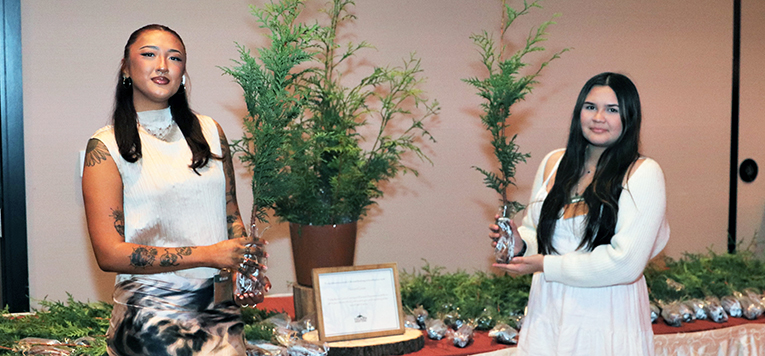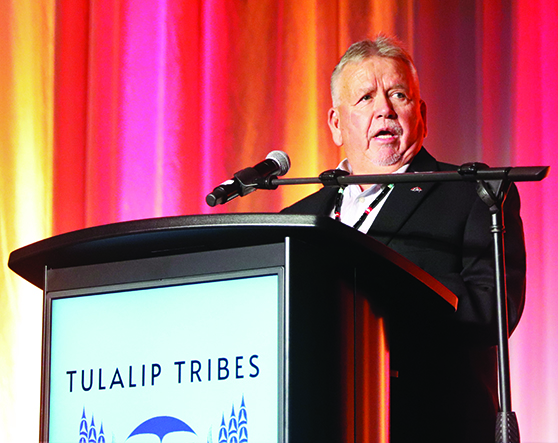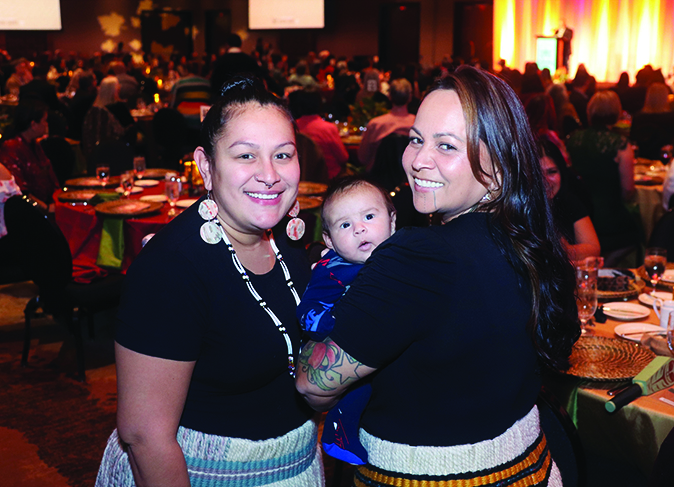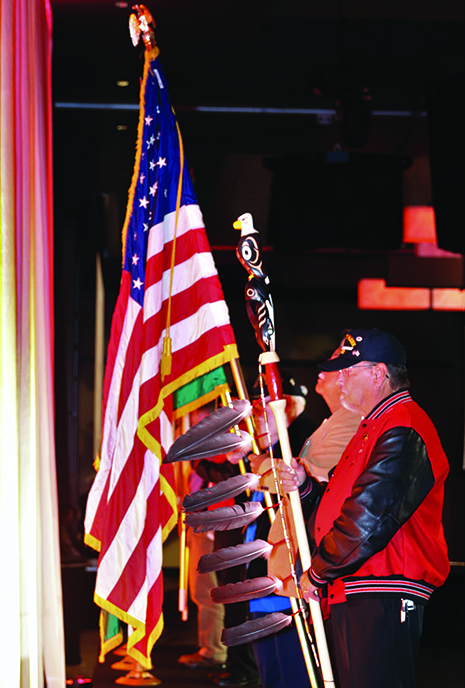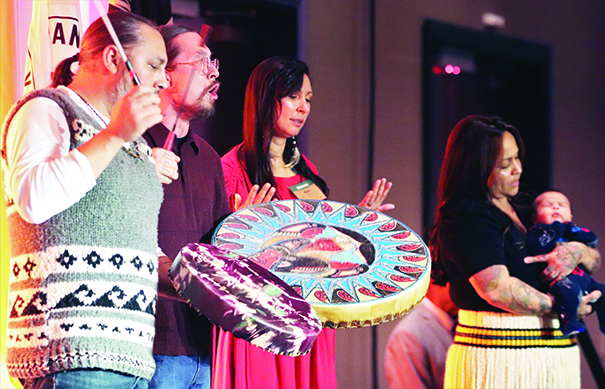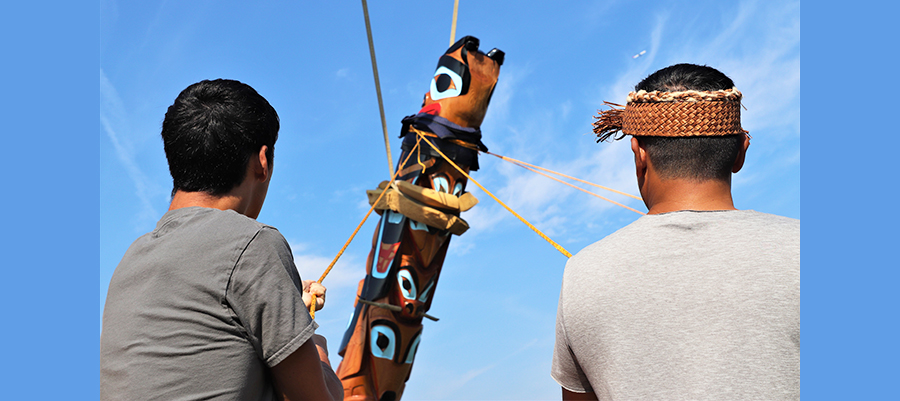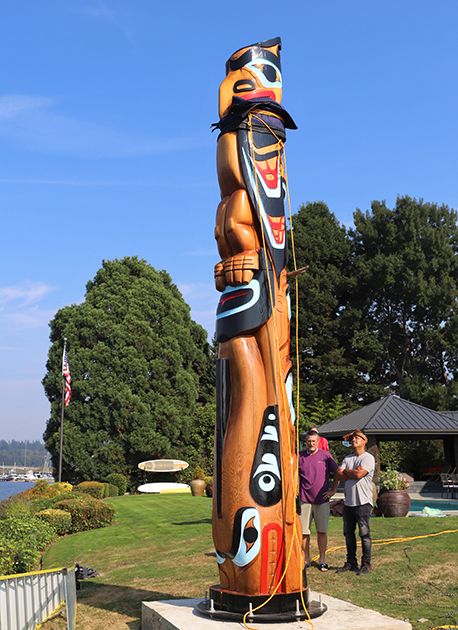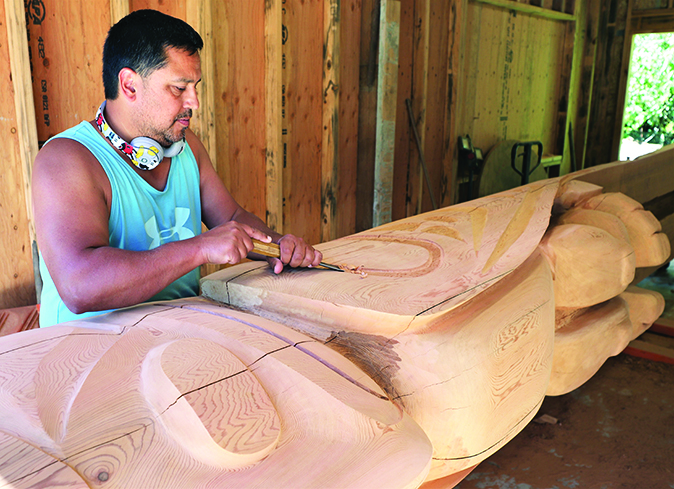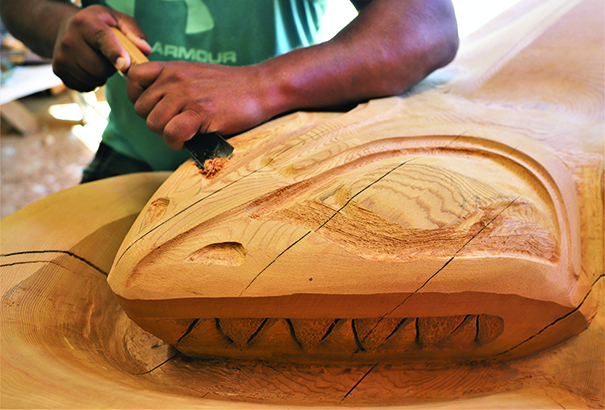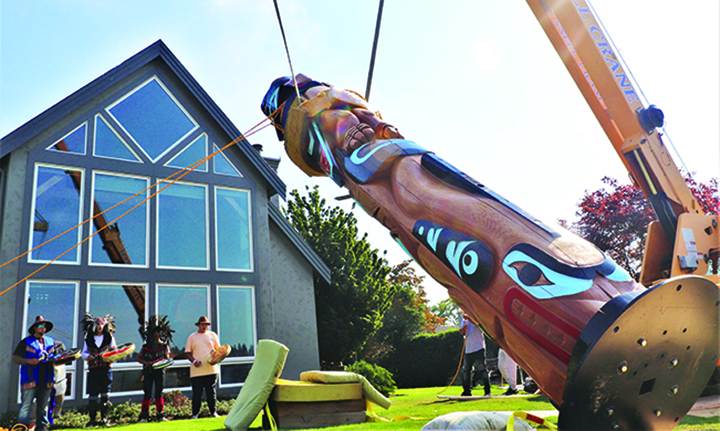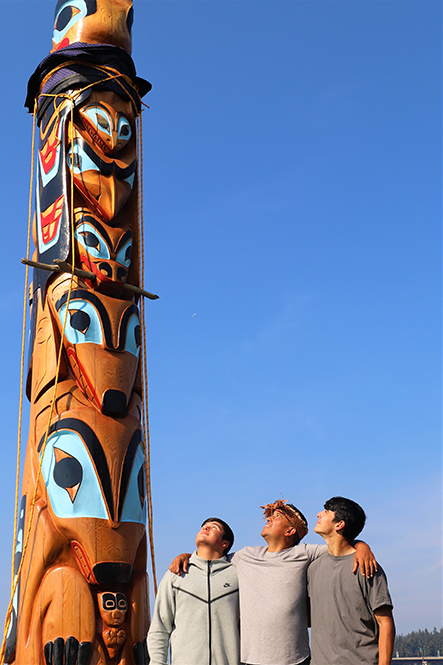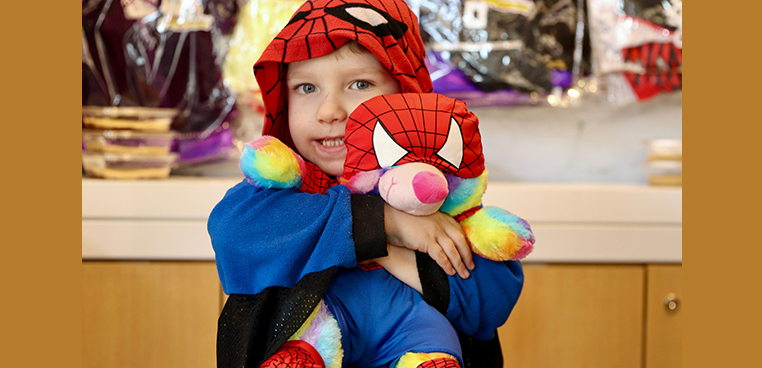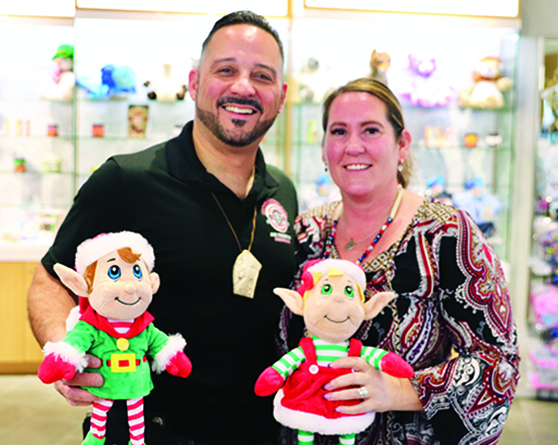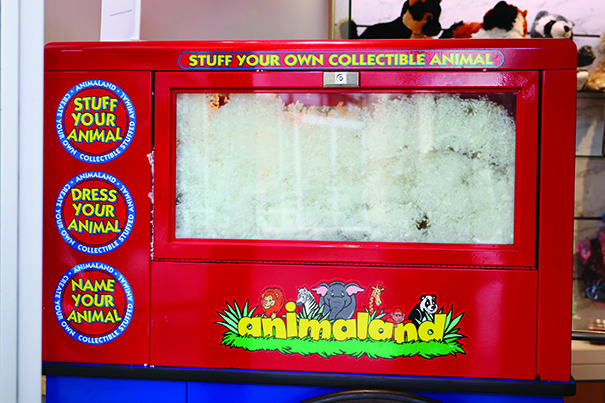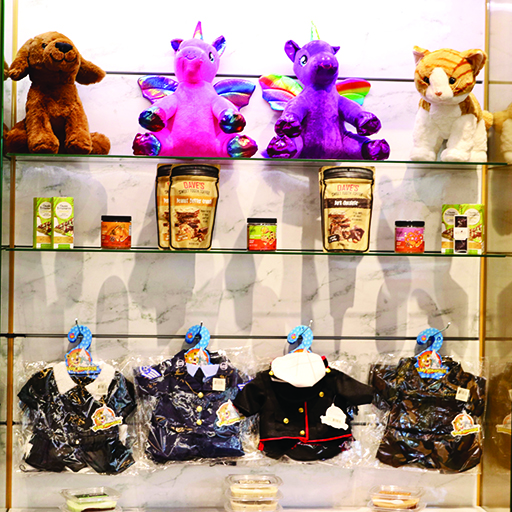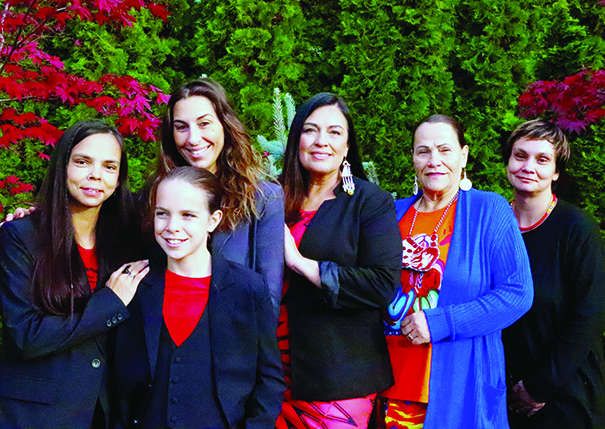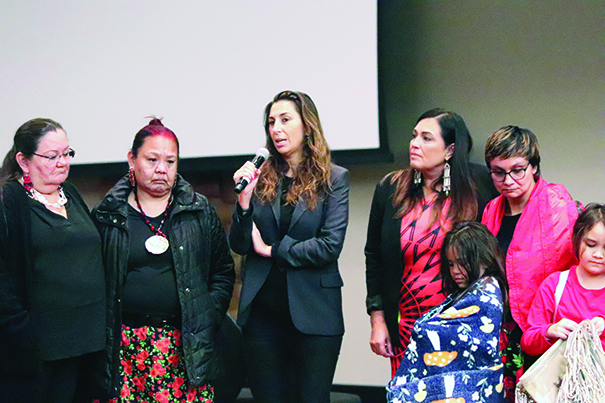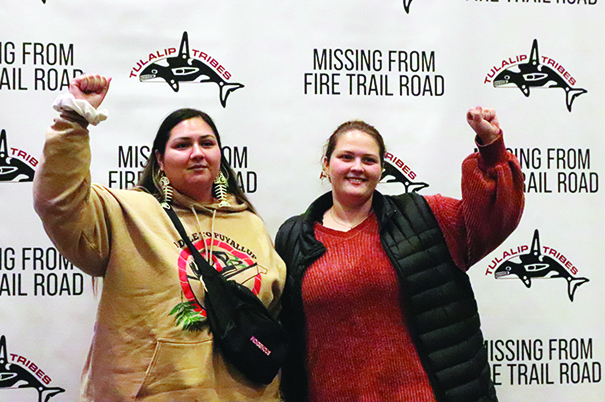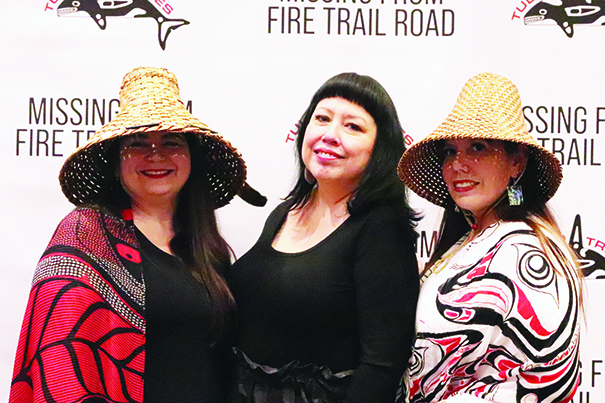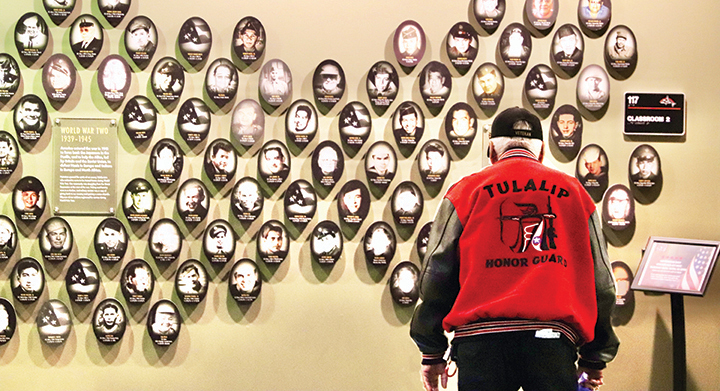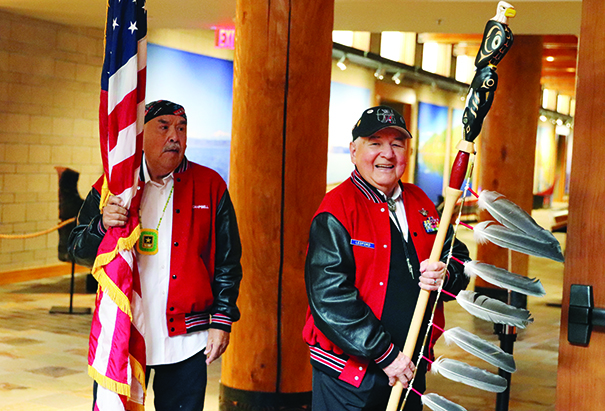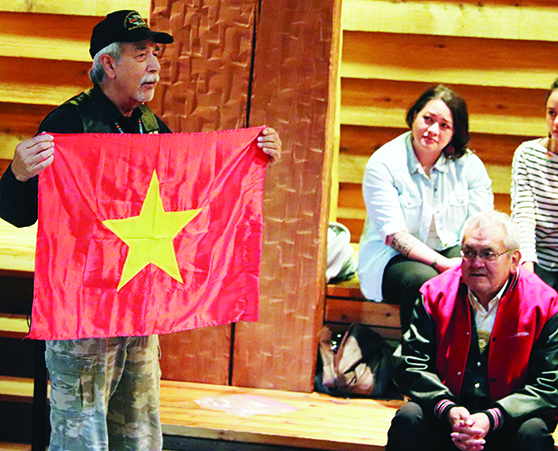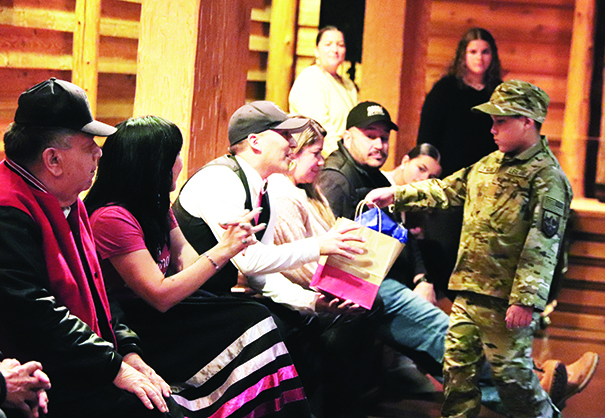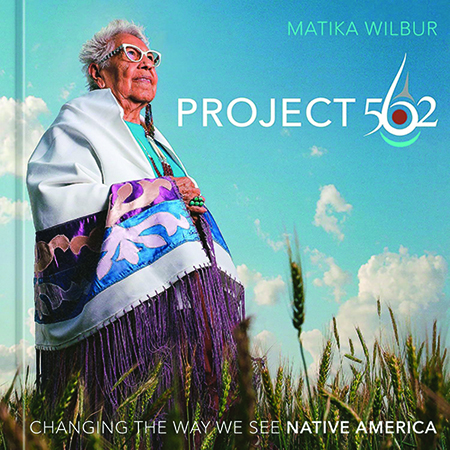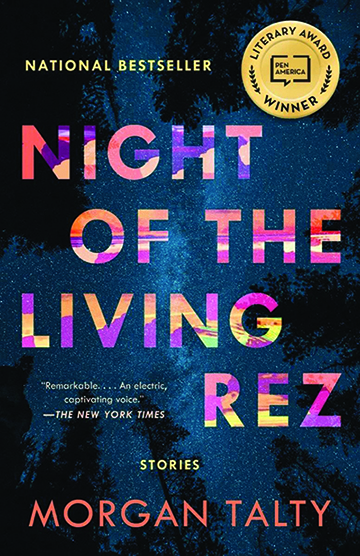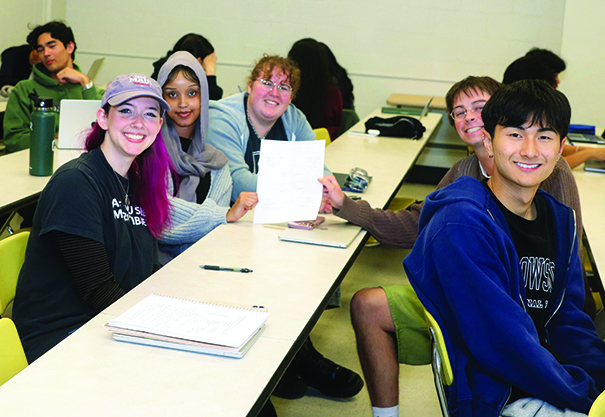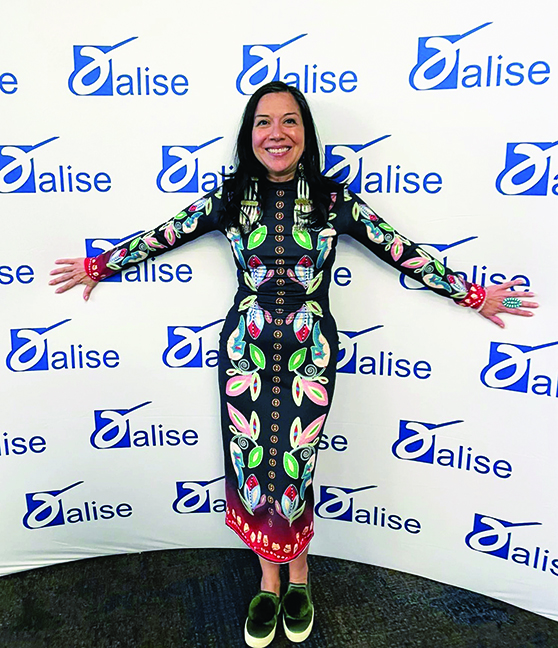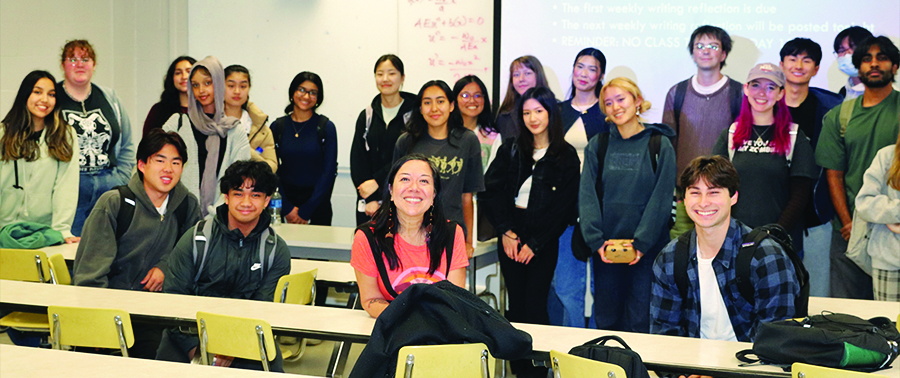TELA introduces five new culturally inspired playgrounds
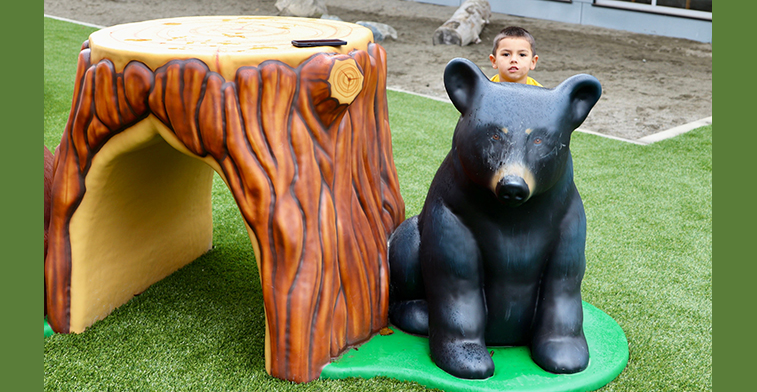
By Kalvin Valdillez, Tulalip News
“To see this all come to life is so beautiful. These are not your typical playgrounds – you can’t find this everywhere. This is related to us and to our kids.” – Taylor Burdett, TELA ECEAP Preschool Manager
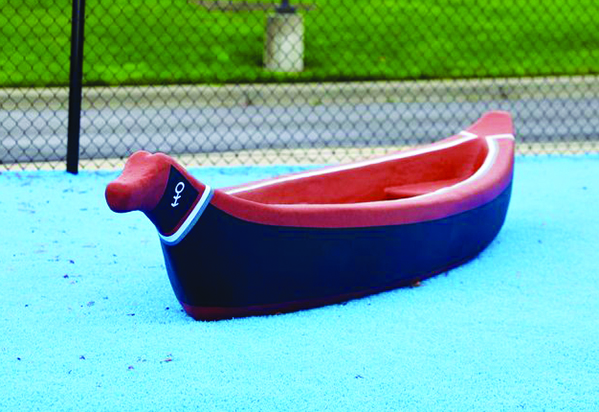
The Betty J. Taylor Early Learning Academy (TELA) recently unveiled not one, not two, not three or four, but five new playgrounds at their campus earlier this fall. Featuring state-of-the-art equipment, the new play areas afford their students the opportunity to expand their knowledge of the local animals and aquatic life, as well as the habitats in which they live.
Furthermore, the playgrounds are accented with Tulalip specific pieces, such as cedar dugout canoes, a life-size replica of the Tulalip longhouse, salmon and orca slides, and a dock that overlooks Tulalip Bay. And there are still a few more installations on the way that will enhance the cultural experience for the kids during outdoor playtime. This includes a smokehouse and a clam pit, where the students can learn how to traditionally prepare the foods of the Tulalip people such as clams, mussels, and smoked salmon.
“I think it’s really about being able to share with the children who they are and where they come from,” said Sheryl Fryberg, TELA Director. “HeadStart talks about how community is so important in early childhood education because it gives them that sense of self-pride and builds their self-esteem. So, the more they know about their own community, the better they’re going to thrive in k-12 and through their college career and life, knowing this is who I am and this is where I come from.”

The project was over five years in the making, according to TELA Manager, Mekyla Fryberg, who spearheaded the effort. The academy began its initial planning phase prior to the pandemic, and when covid hit, the project was put on the back burner. But Mekyla was determined to see it all the way through, and she was able to secure additional Covid-19 funding to utilize for the playgrounds. She also took on the responsibility of finding a contactor and purchasing the equipment, with a goal to complete the project by the end of September 2024.
Said Mekyla, “We have installed five new playgrounds – one specifically for birth-to-three, the rest are for ages 2-5. We have our fishermen’s dock playground; our longhouse, which will be surrounded by our smokehouse and our clam pit, where we focus on Indigenous foods with our students; our sea-life playground; and our wilderness preschool play area. And in addition to those areas, we did some renovations and added in play structures into our inner courtyard playground that was already pre-standing.”
After giving an exclusive tour of all five play areas to the syəcəb, Mekyla shared a little bit about the theme of the playgrounds, which revolve around local wildlife. She stated, “We tried to be intentional with the animals that we chose for the playgrounds and capture the classroom names that we have within our facility. We have our sea-life animals and our small land animals on the birth-to-three wing of the building. And our bigger land animals and birds in the preschool wing.”
To get a better understanding of Mekyla’s statement, let’s take a closer look at a few highlights of each playground. At the renovated inner courtyard, children will find a forest-themed playground with birch tree steppingstones and plenty of interactive fun such as a native wildlife soundboard. And sculptures of butterflies, bears, and bluejays can be found high and low throughout this entire play area.
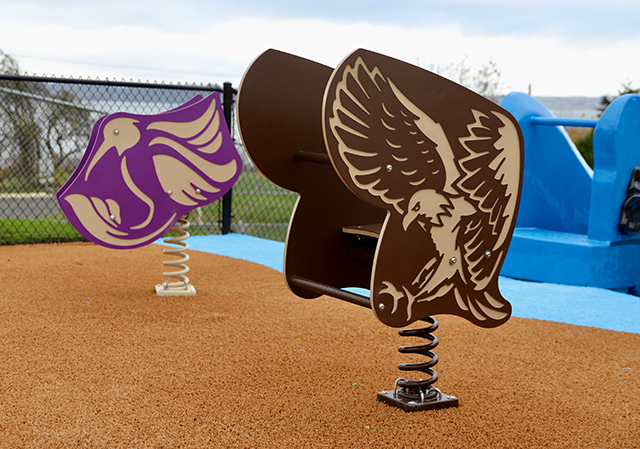
Next up, there is the fishermen’s dock, which not only features the canoe and the salmon/orca slides, but also a realistic pier play structure. Complete with perched seagulls and observation viewers, the kids can look out at the bay and feel as though they are at the Tulalip Marina. A few more cool pieces at this playground include oyster steppingstones and also hummingbird and eagle spring riders.
Across the fishermen’s dock is the field where TELA holds its annual clambake ceremony. A permanent spot has been reserved for the clam pit, which sits directly in front of the new longhouse. The longhouse was modeled after Tulalip’s own cedar longhouse and the attention to detail is nothing short of stunning.
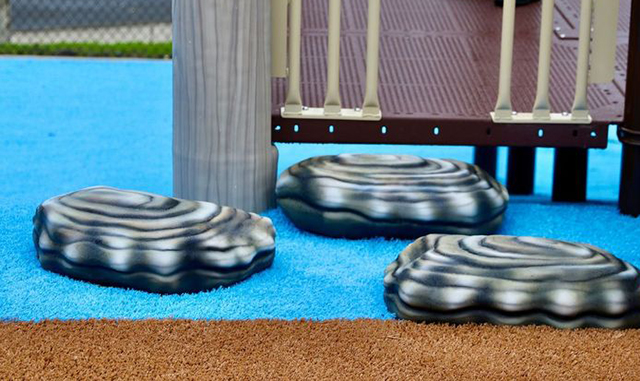
“They [contractors] actually went down to our longhouse and were able to replicate the posts,” Mekyla explained.
Sheryl added, “We are going to develop it so that it looks more like it did when we lived in our longhouses. We want to get like food storage, and baskets, and something that replicates tule mats. I’m just so excited about it because it really gives the kids that feel. When we bring them to our longhouse, even the young kids, they feel when they walk in the door, that it’s different in there.”
Next on the tour is the sea-life playground that is located on the birth-to-three side of the academy. Upon entrance, the kids are greeted with a deep blue playground turf that serves as a replica of the Salish Sea. A whale’s tail appears to be jutting out of the ocean on the far side of the turf. On its opposite side is the head of an orca swimming alongside her calf, giving the illusion that the killer whale’s body is underwater. A few more highlights of the sea-life playground are sealion sculptures, jellyfish slides, and a giant figure of a sea turtle.
The fifth and final playground can be found on the preschool side and is known as the wilderness playground. All the equipment on this playground is painted brown and green, to provide that outdoorsy vibe for the kids. Sitting on top of the main play structure is an owl looking out from a tree canopy. And below, the kids can reach the slides by climbing cedar logs and three cedarwood cookie steppingstones. In addition to the owl, the wildlife of this play area consists of a howling wolf, two bears, and a mama deer cuddled next to her fawn.

The wilderness playground also has a few key features that we’d be remiss to mention. For the first time, in all of TELA’s history, the academy has a full-fledged swing set. And directly across the new swing set is perhaps the main attraction of the wilderness playground, a section with imported sand, rocks, and driftwood from the local coastline. TELA brought the beach to the academy! And it’s proving to be a place that many of the students connect with the most.
“One of our teachers said that this is like the serenity spot for the kids,” shared Sheryl. “They run and play hard everywhere else but when they get here, they just relax. It’s like hitting Mother Earth, right? It brings such joy to my heart because we have provided so many different opportunities for them to be outside. And learning outside is the best thing we can do for our children; to experience the world, so they’re not just stuck in the classroom. They get to learn about their animals and even the sounds of the animals.”
Following the exclusive tour, the three TELA leaders took a moment to share their personal favorite playgrounds with Tulalip News.
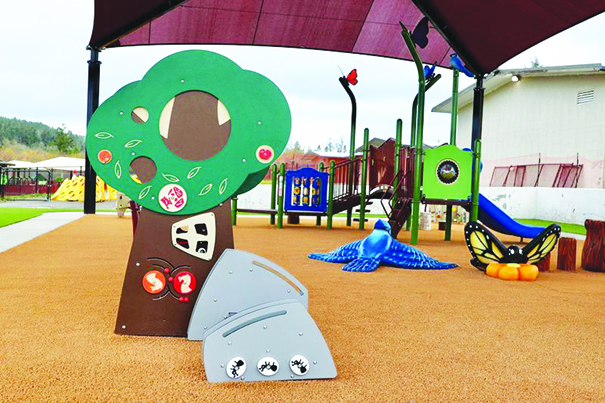
“I think the fisherman dock is my favorite,” Mekyla exclaimed. “We have the salmon and killer whale slides. And just being able to scan out on the dock while you’re looking at the bay. I also like to see that it gives some of our teachers the opportunity to engage and learn as well, and so that’s also really rewarding for me.”
Taylor expressed, “I don’t have a favorite place but the little details of everything is my favorite, like the little oyster shells and the little accessories everywhere. From covid, we’ve seen an increase in our developmental delays and our sensory needs of our students. So, we just tried to expand that outside of the classrooms and to give them opportunities on the playground. There’s secured safe sounds, there’s a lot of different noise, auditory, and feely-sensey things for them and that’s so great.”
“The longhouse is my favorite because it gives us the opportunity to show the way we lived originally in our longhouses as well as how we utilize them today,” Sheryl revealed. “And it’s going to be a great place for our teachers and our Lushootseed department to share traditional stories and knowledge with our kids.”
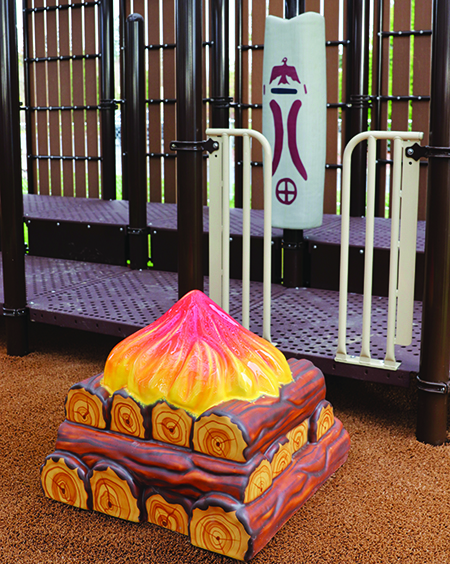
Since its establishment, the early learning academy has continued to find new ways to incorporate the Tulalip culture and their ancestral knowledge into their curriculum. The new playgrounds are an extension of those ideals and values of the academy. And just a few weeks after introducing the play areas to their students, the kids are already in love with the animal sculptures and culturally inspired play structures, and they are having a blast exploring every detail of the new parks.
If you have yet to see the new playgrounds, the fishermen’s dock and longhouse are visible from the academy’s parking lot. Please keep in mind that in order to preserve the pristine look of the new play structures for future generations, the new playgrounds are closed to the public. For additional info, please contact TELA at (360) 716-4250.
